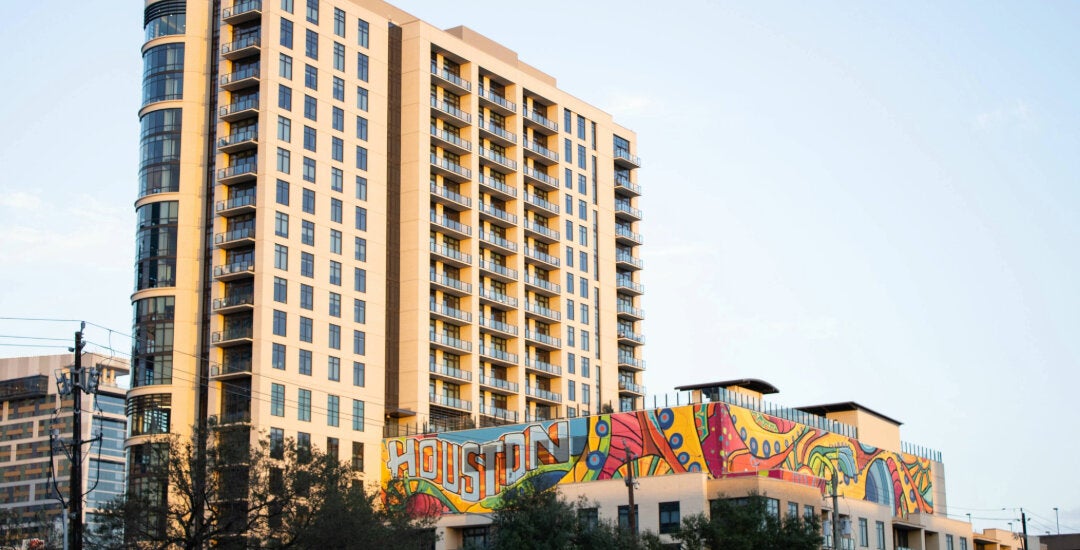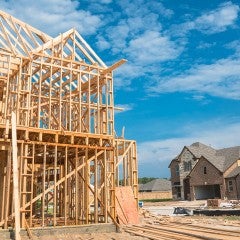To tackle the housing shortage in Texas alone, an estimated 306,000 additional single-family units are needed, according to an August report by state Comptroller Glenn Hegar.
The shortage is particularly acute for lower-income households in the city of Houston, according to the Kinder Institute’s 2024 State of Housing in Harris County and Houston report. The total number of rental units needed to close the gap between supply and demand for the lowest income tiers is about 113,000.
Higher-income households have a wider range of rental options to choose from. But as the figure above shows, there is an undersupply of units priced for households earning more than $75,000, which puts pressure on the supply of middle-priced housing.
“For households making less than $25,000 a year, there’s not a lot out there,” said Kinder Institute research scientist Steve Sherman. “There’s an oversupply in the middle-income range, but the reality is that those lower-income households are going to have to compete with households that can pay a lot more.”
Considering the cost of building a unit of housing, closing the need gap will require investment far beyond what government programs can provide alone.
The Urban Edge wanted to know: What would it take to close the low-income housing gap in Houston? We asked one affordable housing expert to give us a rough idea of what one unit of housing costs to build.
“Rental units vary greatly,” said Houston Habitat for Humanity CEO Allison Hay. “The average cost ‘per door’ is probably closer to $170,000 to $250,000 these days. Supportive housing adds another $100,000 to that number. Pushing that much money into one geography would likely increase land and construction costs, pushing the number even higher.”
Based on Hay’s figure, closing the gap within the city of Houston would require spending $25 billion to $28 billion to build additional low-income rental housing.
In Harris County overall, meeting demand among households earning below $20,000 annually — or 30% of the area’s median household income — would mean building over 156,000 new housing units, according to “My Home is Here: Harris County’s Housing Needs Assessment and 10-Year Strategy,” a 2021 analysis that the Kinder Institute was the lead consultant on. That would cost an estimated $30 billion to $40 billion. (This includes all of the city’s total and the needs for households outside city limits.)
During the Kinder Institute’s 2024 State of Housing in Harris County and Houston webinar, Mike Nichols, director of Houston's Housing and Community Development Department, said the issue of affordable housing cannot be solely solved locally.
“We have to fix the housing problem,” Nichols said. “We can do that if we make sure there’s adequate funding, which there’s not at this point. We need to be talking to our federal officials on a daily basis about what they can do to increase the funding for affordable houses all the way through for single-family and multifamily building.”
The Houston metro area is good at building housing. It led the nation in new building permitting for residential units in 2023, with 68,755 permits issued. However, only about 18,000 of those were for multifamily units, and the area is among the nation’s worst for supplying housing to the lowest-income households.
Nichols said that while he believes most people prefer a single-family home, permitting and construction for multifamily units must increase for people who are unable to afford single-family units. He also encouraged greater investment in the permitting system to speed up the process.
“That’s something we could do better than other cities,” Nichols said. “We need to build faster and more. Having people live in substandard housing or live homeless is not what we want to do. We need to make sure we have adequate housing going up in Harris County and in Houston.
“There can be great housing development in the outskirts of cities. But without a strong center city, we’re lost.”



